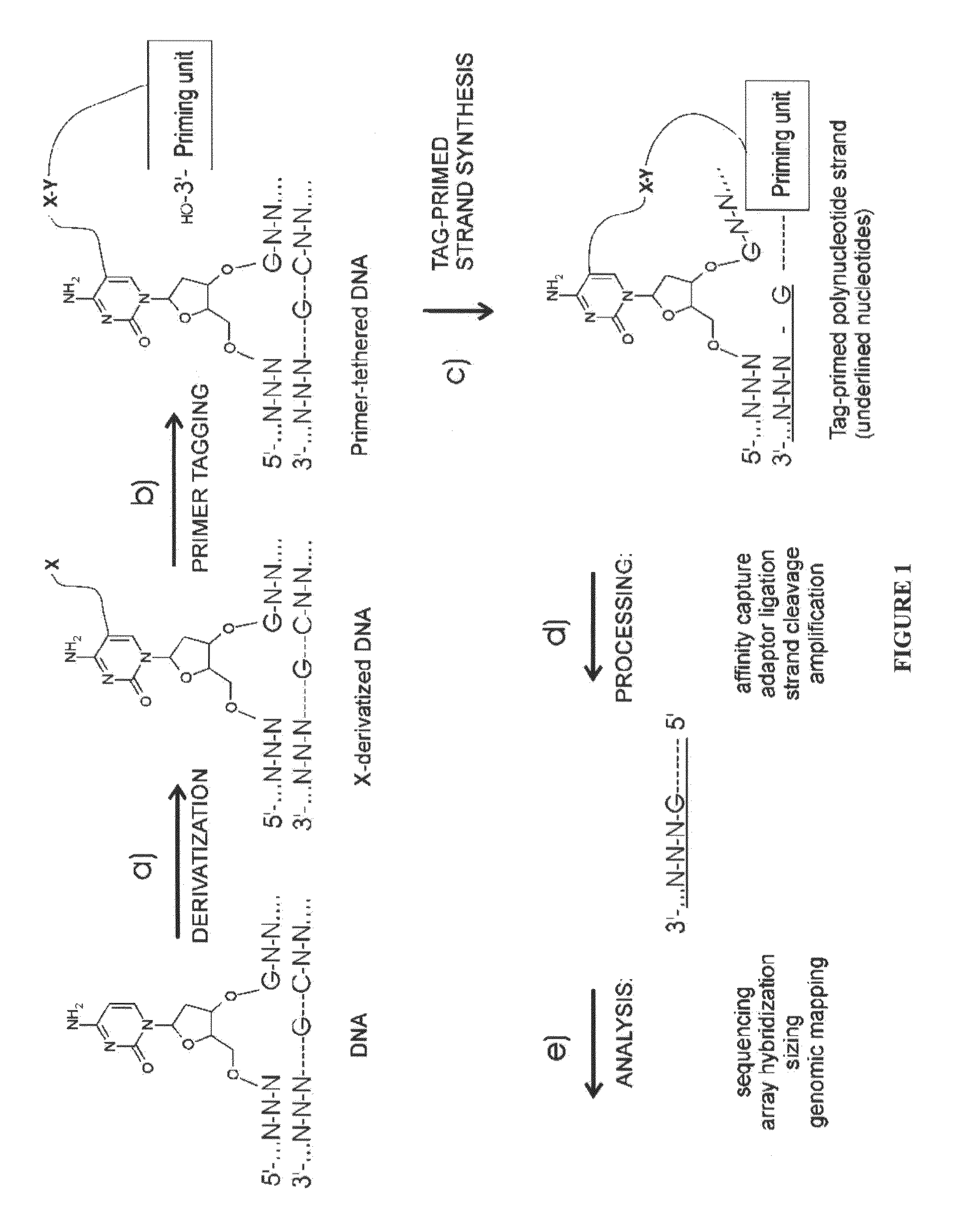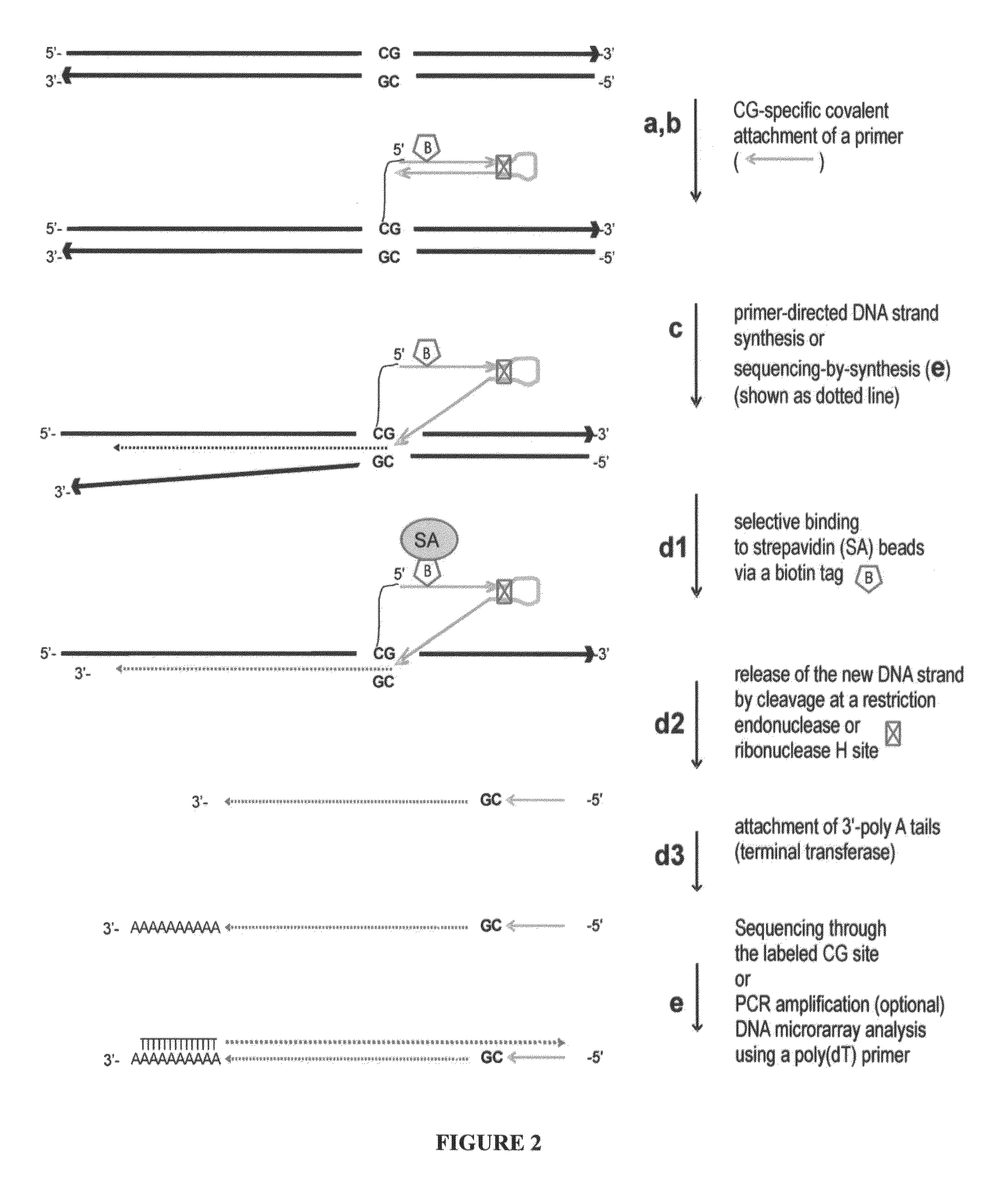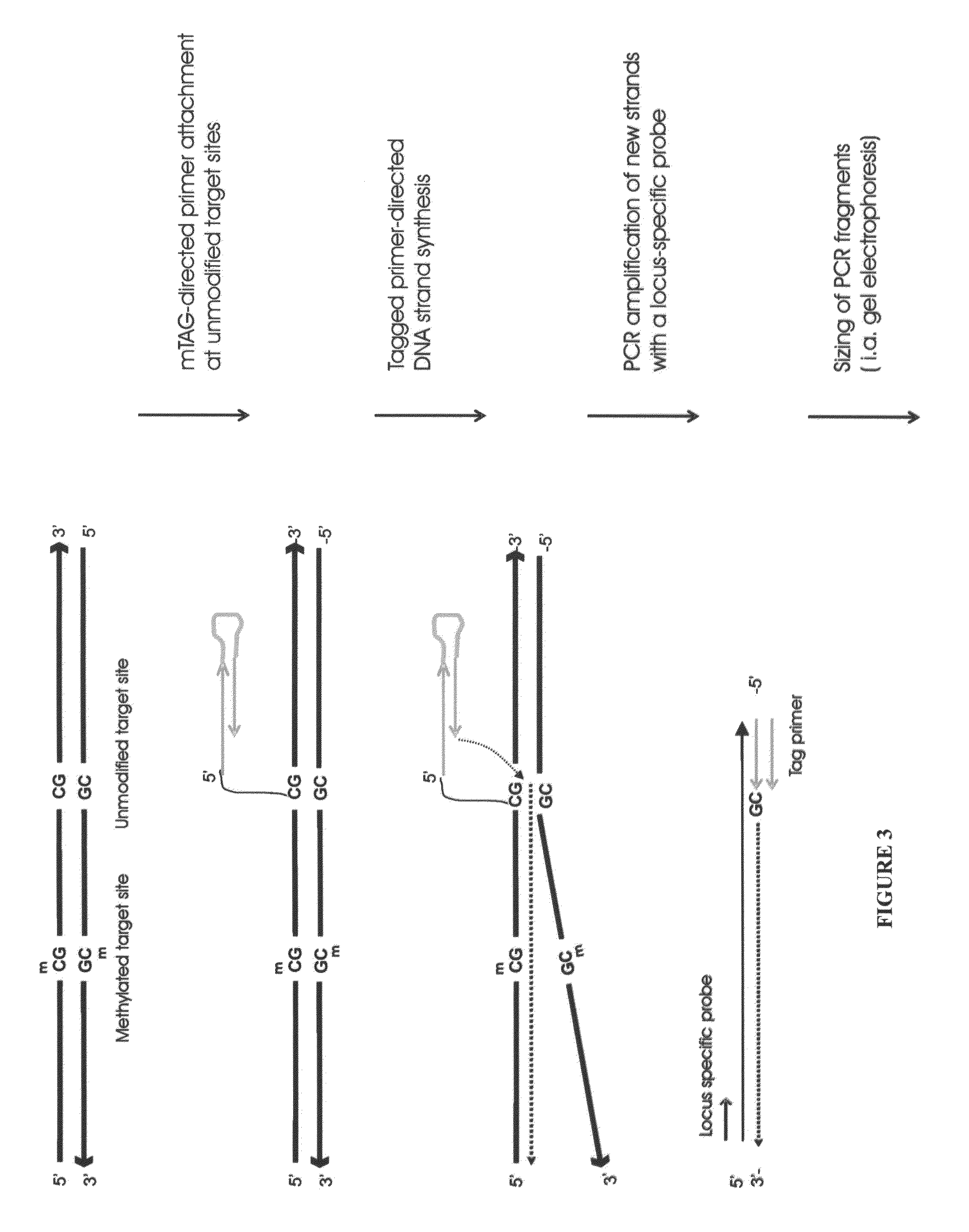Nucleic acid production and sequence analysis
a technology of nucleic acid and sequence analysis, applied in the field of nucleic acid production and sequence analysis, can solve the problems of laborious, tedious process, low resolution, etc., and achieve the effect of high resolution
- Summary
- Abstract
- Description
- Claims
- Application Information
AI Technical Summary
Benefits of technology
Problems solved by technology
Method used
Image
Examples
example 1
Sequence Mapping of Covalently Tagged Unmodified GCGC Target Sites in a DNA Fragment
[0140]A 267 bp DNA fragment (267pBR) produced by PCR amplification was used as a model substrate (FIG. 12), although it is clear any other DNA fragment of any origin is suitable. The DNA fragment was obtained by PCR using the pBR322 plasmid as a template, pBR-164dir and pBR-99rev oligonucleotides each 0.5 μM concentration, by using standard PCR protocol (Fermentas catalogue 2010 / 2011).
a) Covalent Tagging of GCGC Target Sites with Thiol Groups (Preparation of a Site-Specifically Thiol-Derivatized DNA Fragment)
[0141]Covalent tagging with thiol groups of GCGC target sites in the 267pBR fragment was performed using mTAG approach (Lukinavidus et al., 2007). 267pBR DNA (final concentration 2.5 μM) was incubated with the HhaI DNA methyltransferase (variant Q82A / Y254S / N304A) (5 μM) and AdoS(Ac) cofactor (90 μM) for 2 hours at 37° C. in MOPS pH 7.4 buffer. After modification, the obtained 267pBR-S(Ac) fragmen...
example 2
Sequence Mapping of Covalently Tagged 5-Hydroxymethylated GCGC target Sites in a DNA Fragment
a) Covalent Tagging of 5-Hydroxymethylated GCGC Target Sites with Thiol Groups (Preparation of a Site-Specifically Thiol-Derivatized DNA Fragment)
[0149]267pBR was modified with formaldehyde and M.HhaI as described (Liutkeviciute et al., Nat. Chem. Biol. 2009, 5: 400-402) to produce DNA (267pBR-hmC) containing hmC residues at the GCGC target site. Covalent tagging of hmC-containing GCGC target sites with thiol groups was generally performed as described (Liutkeviciute et al., Angew. Chem. Int. Ed., 2011, 50, 2090-2093). 267pBR-hmC DNA (final concentration 2.5 μM) was incubated with HhaI DNA methyltransferase (variant Q82A / Y254S / N304A) (5 μM) and 1,4-dithiothreitol (25 μM) for 1 hour at 25° C. in MOPS pH 7.4 buffer, and the resulting 267pBR-hmC-SH DNA was purified using a nucleotide removal kit (Qiagen).
b)Tethering of a Linking Unit to a Site-Specifically Derivatized DNA Fragment (X-Y Coupling...
example 3
Mapping of Covalently Tagged GCGC Target Sites in Plasmid DNA
[0156]Tagged target mapping was further demonstrated on pBR322 plasmid DNA (4361 bp), which contains 31 GCGC targets sites.
a) Covalent Tagging of GCGC Target Sites with Thiol or Maleimide Groups (Preparation of a Site-Specifically Derivatized Plasmid DNA)
[0157]Preparation of Thiol-Derivatized pBR322 DNA (X=Thiol)
[0158]pBR322 plasmid (0.1 mg / ml) was modified with AdoS(Ac) cofactor (10 μM racemate) using HhaIDNA methyltransferase (1 μM) for 1 hour at 37° C. in MOPS pH 7.4 buffer, and then methyltransferase was inactivated by incubating at 80° C. for 20 min. The plasmid was then linearized with the R.EcoRI restriction endonuclease (Fermentas) to yield pBR322-S(Ac) DNA. DNA was extracted with Phenol / Chloroform / isoamyl alcohol mix, and then 2 times with chloroform and applied to DE81 paper filter (Whatman, cat.no.3658-023), equilibrated with 270 mM NaOAc in a Pierce-SpinCups Paper Filter Column (prod.#69700). The column was was...
PUM
| Property | Measurement | Unit |
|---|---|---|
| volume | aaaaa | aaaaa |
| pH | aaaaa | aaaaa |
| total volume | aaaaa | aaaaa |
Abstract
Description
Claims
Application Information
 Login to View More
Login to View More - R&D
- Intellectual Property
- Life Sciences
- Materials
- Tech Scout
- Unparalleled Data Quality
- Higher Quality Content
- 60% Fewer Hallucinations
Browse by: Latest US Patents, China's latest patents, Technical Efficacy Thesaurus, Application Domain, Technology Topic, Popular Technical Reports.
© 2025 PatSnap. All rights reserved.Legal|Privacy policy|Modern Slavery Act Transparency Statement|Sitemap|About US| Contact US: help@patsnap.com



